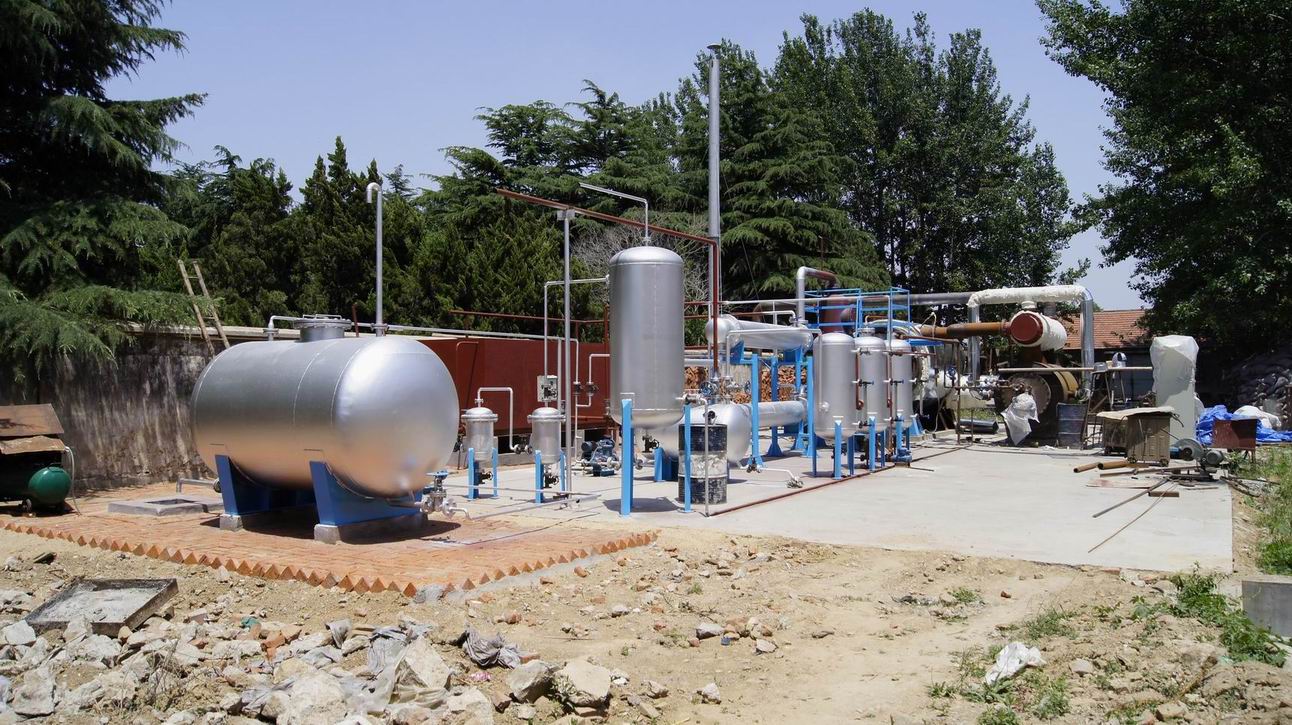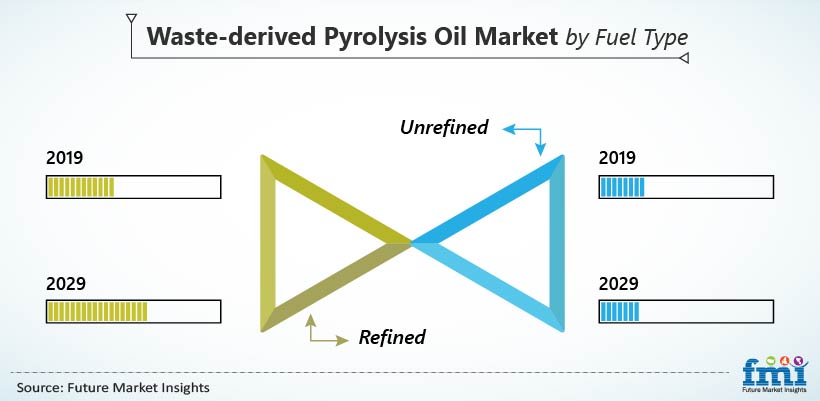
Steered by heightening demand for fossil fuel alternatives, waste-derived pyrolysis oil market will exhibit a steady CAGR of 4.5% over the forecast period (2019-2029). The market is set to witness approximately 1.6X value expansion between 2019 and 2029. Climate change will continue to propel the market growth, projects the new FMI study.
“Waste-derived pyrolysis oil market is still in its nascent stage. However, it is gaining notable momentum on the back of challenges imposed by aggravating climatic conditions. Moreover, fluctuating prices of conventional fossil fuels are compelling manufacturers to develop better alternatives,” concludes the FMI report.

Download PDF sample of the 380-page report on waste-derived pyrolysis oil market https://www.futuremarketinsights.com/reports/sample/rep-gb-11058
Key Takeaways of Waste-derived Pyrolysis Oil Market Study
- Biomass-derived pyrolysis oil continues to capture the leading share in the overall market stack.
- Pyrolysis oil extracted from rubber will gain impetus through the forecast period.
- The fast pyrolysis process will sustain its prominence through 2029 as a preferred method by manufacturers.
- Refined grade continues to be in prodigious demand as opposed to its unrefined counterpart.
- Europe and East Asia collectively represent the epicenter of global market growth.
Waste-derived Pyrolysis Oil Market – Top Growth Drivers
- Escalating efforts to curb carbon emissions is the growth engine of the waste-derived pyrolysis oil market.
- The oil & gas industry is at the forefront, generating substantial demand for waste-derived pyrolysis oil.
- Owing to strong government incentives and the presence of established manufacturers, the waste-derived pyrolysis oil market is burgeoning in North America.
- The use of waste-derived pyrolysis oil as jet engine fuel and aviation biofuel for motors and generators offers a new growth horizon in the aviation industry.
Waste-derived Pyrolysis Oil Market – Key Restraints
- Relatively high price points and limited reusability are stagnating the demand for plastic-derived pyrolysis oil.
- Achieving sustained competitive advantage is a strenuous endeavor for market leaders due to the fairly consolidated competitive landscape.
Explore 52 tables and 206 figures in the study. Request TOC of the report at https://www.futuremarketinsights.com/askus/rep-gb-11058
Competitive Landscape
The competitive landscape of the global waste-derived pyrolysis oil market is moderately consolidated in nature. Leading manufacturers profiled in this report include, but are not limited to, Ensyn, Dow Inc., Honeywell UOP, BASF SE, ConocoPhillips, Enerkem, and Agilyx, Inc. Prominent players possess the resources to conduct extensive R&D activities and broaden their production capacity. Moreover, they continue to opt for inorganic growth strategies such as joint ventures and collaborations along with organic growth strategies such as product development. The upcoming decade will witness the rise of new players in the global waste-derived pyrolysis oil market amidst fluctuating oil prices and the establishment of inexpensive pyrolysis units.
WASTE-DERIVED PYROLYSIS OIL MARKET TAXONOMY
Fuel Type
- Unrefined
- Refined
- Diesel
- Petrol/Gasoline
- Fuel Oil
- Others
Pyrolysis Process
- Fast
- Flash
- Others
Source
- Plastic
- LDPE
- HDPE
- Polystyrene
- Others
- Rubber
- Biomass
End Use
- Heat & Power
- Boilers
- Gas Turbines
- Diesel Engines
- Automotive Fuel
- Bio Refineries
- Food Flavouring
Region
- North America
- Latin America
- Europe
- South Asia
- East Asia
- Oceania
- Middle East & Africa
